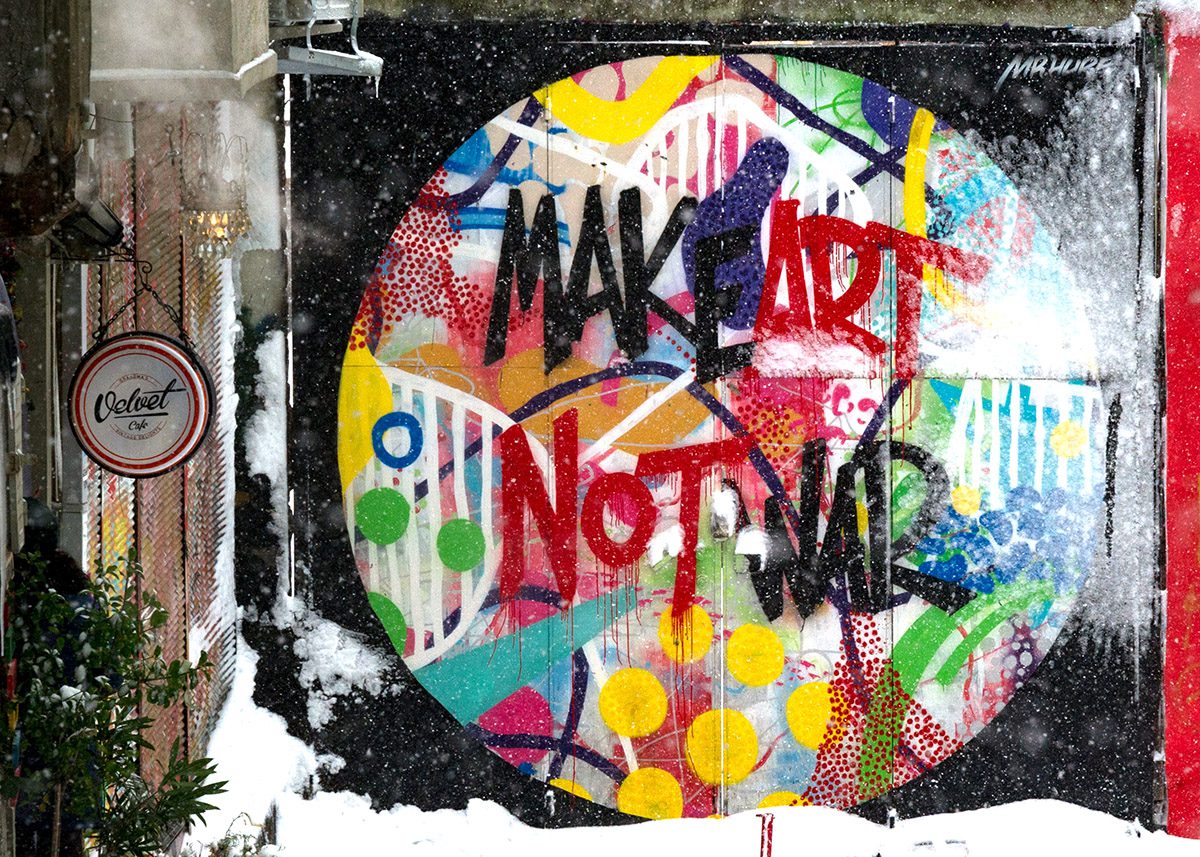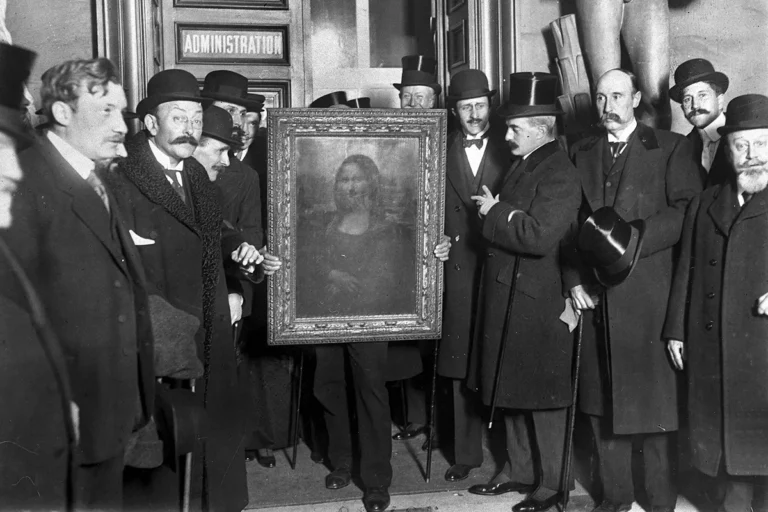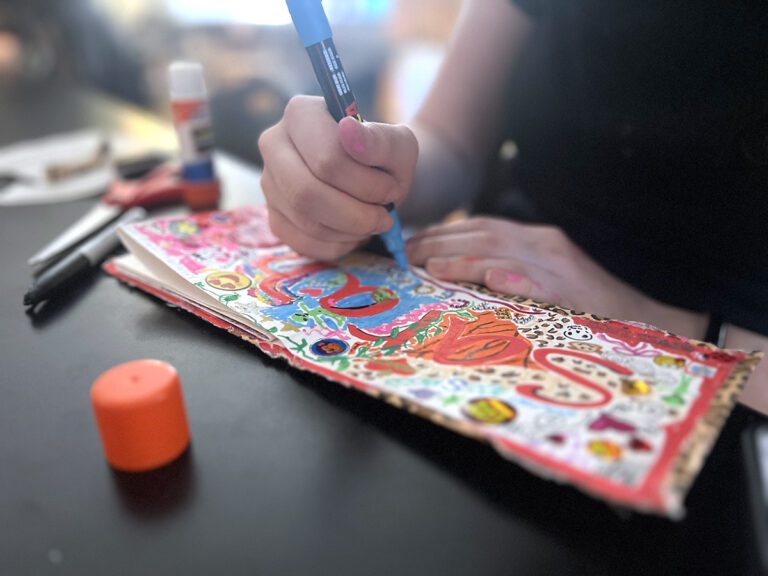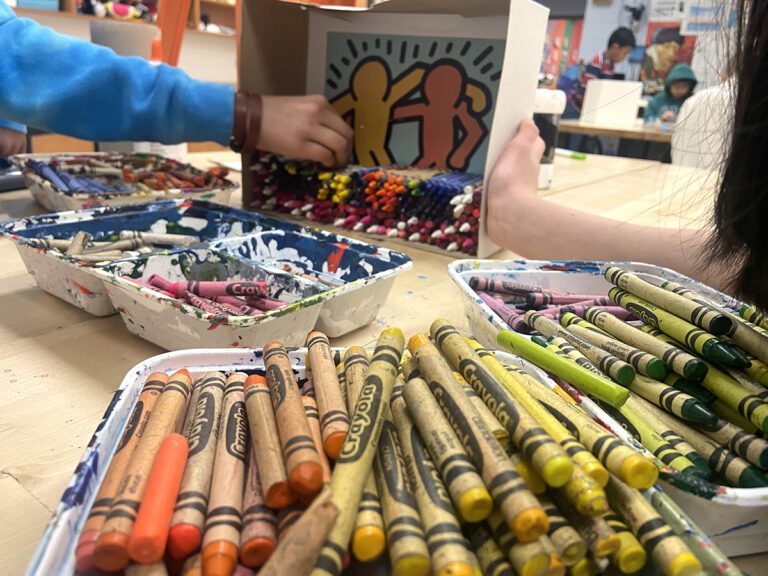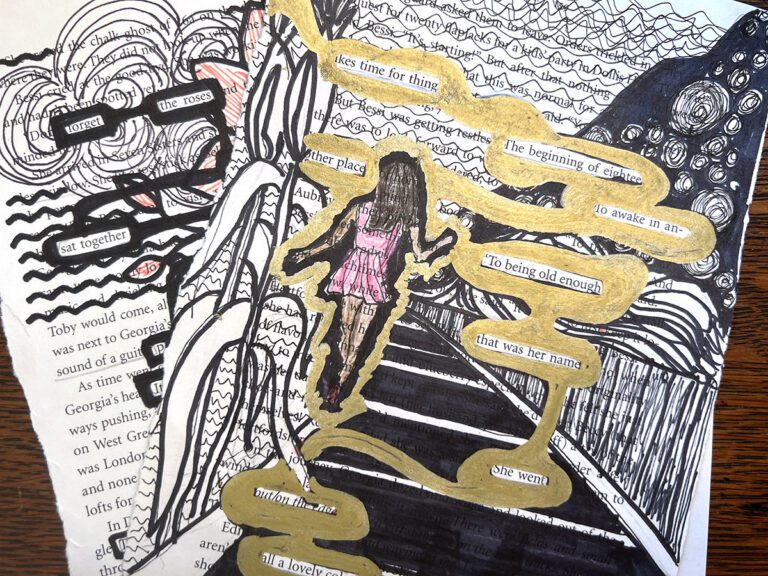Note: Be sure to browse each artist’s website and work before deciding what is appropriate to show and discuss with your students. Adhere to your district’s guidelines and consider your students’ age levels.
Graffiti as an art form has often been shrouded in controversy and debate. Is it really “art,” or is it just vandalism? Is it the art of the masses, or has graffiti itself sold out? All of this controversy is exactly what draws young people to this art form. As art teachers, you can use that to your advantage to create highly-engaging lessons that can build community connections in and out of your art room.
Graffiti is a hyperlocal form of art. Unlike famous paintings that often never leave their home museum, graffiti is immediately visible to all passersby. Many graffiti spots become visual landmarks for members of the community. Even Forbes sees the value of graffiti and street art to both community and local businesses.
Graffiti doesn’t have to be large in order for it to feel like a part of the community. In my neighborhood, GATS’s Face greets you from the back of stop signs and streetlight posts, asking, “CHU NEED?” Recognizing small tags and slaps can make the neighborhood feel as homey as walking past a throw or mural. Because of graffiti’s localized nature, it’s a great genre to use for community building.
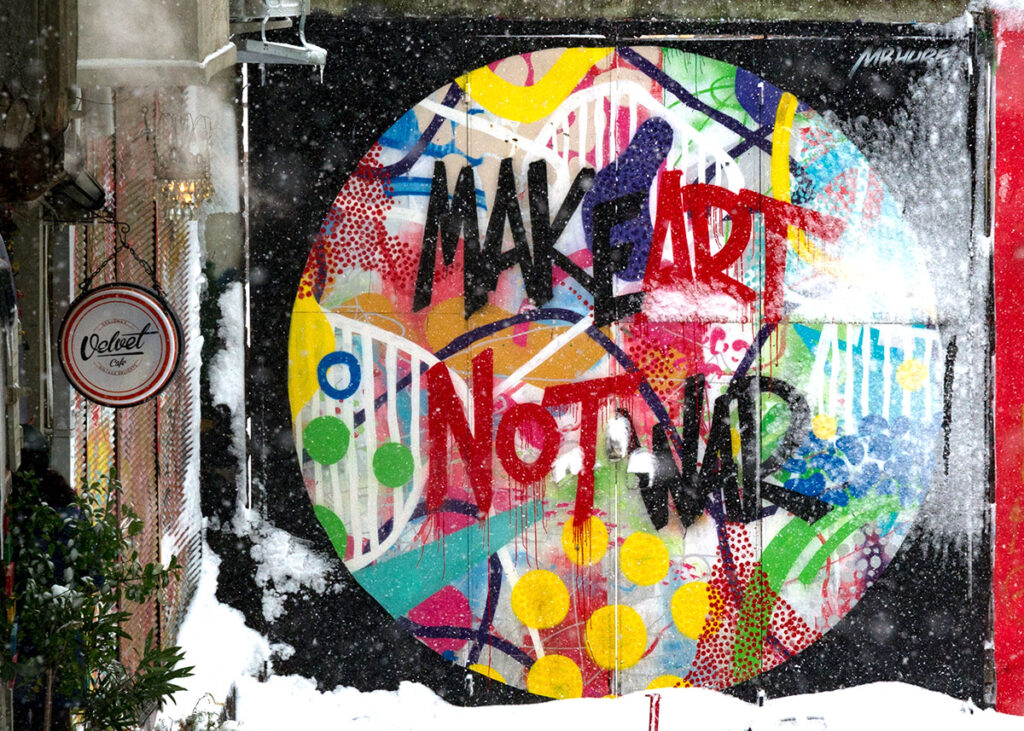
Are you worried about pushback just because of the word “graffiti?” If so, teach “street art” instead! These terms are often used interchangeably, but there are differences between the two. Using the phrase “street art” implies learning about commissioned works rather than vandalism. Many artists, like Shepard Fairey, move between the two genres. Many dynamics are the same, and students can still create pseudonyms and install their work anonymously.
Read on for three ways to grow your community connections through learning about graffiti!
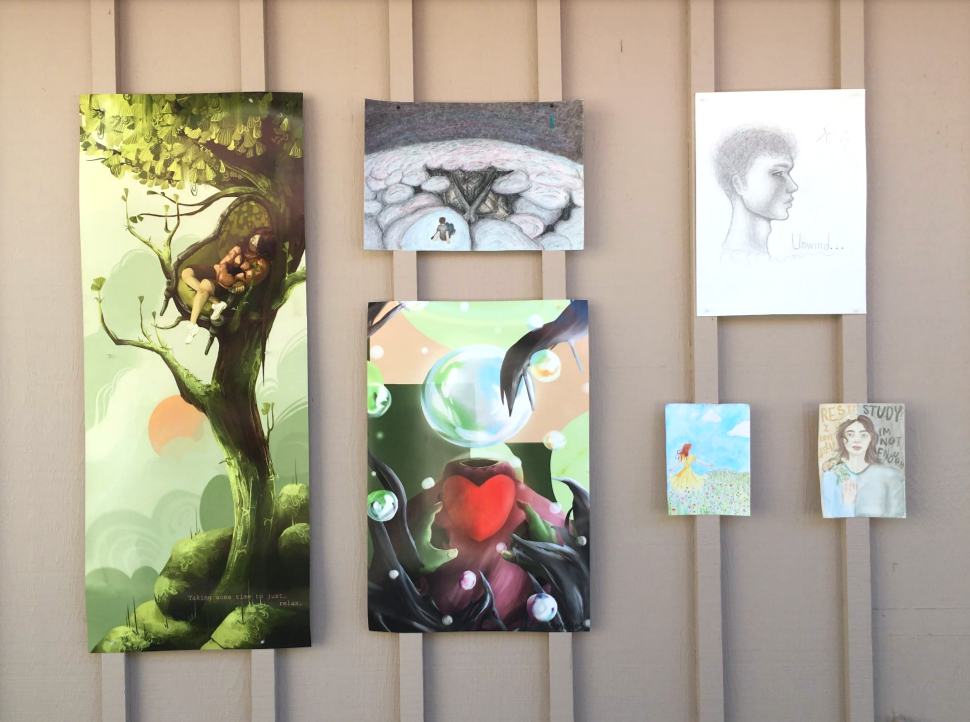
1. Create student collectives.
Graffiti is built on collaboration. Artists usually work on their own but often also work in groups. These groups are sometimes referred to as collectives. Groups like Punks Thugs And Vandals and Robots Will Kill are great examples. While the art styles vary from member to member, the spirit of collaboration is very much present. This camaraderie extends outside of collectives as well. Artists who have access to gallery space, like Nite Owl, will share and sell work for their friends who don’t have access to those resources.
Bring that same collaborative spirit into your classroom by creating student collectives. Use your favorite method of grouping students together, then give each collective until the end of the class period to come up with their group name. These collectives might exist for only one project or for the entire year!
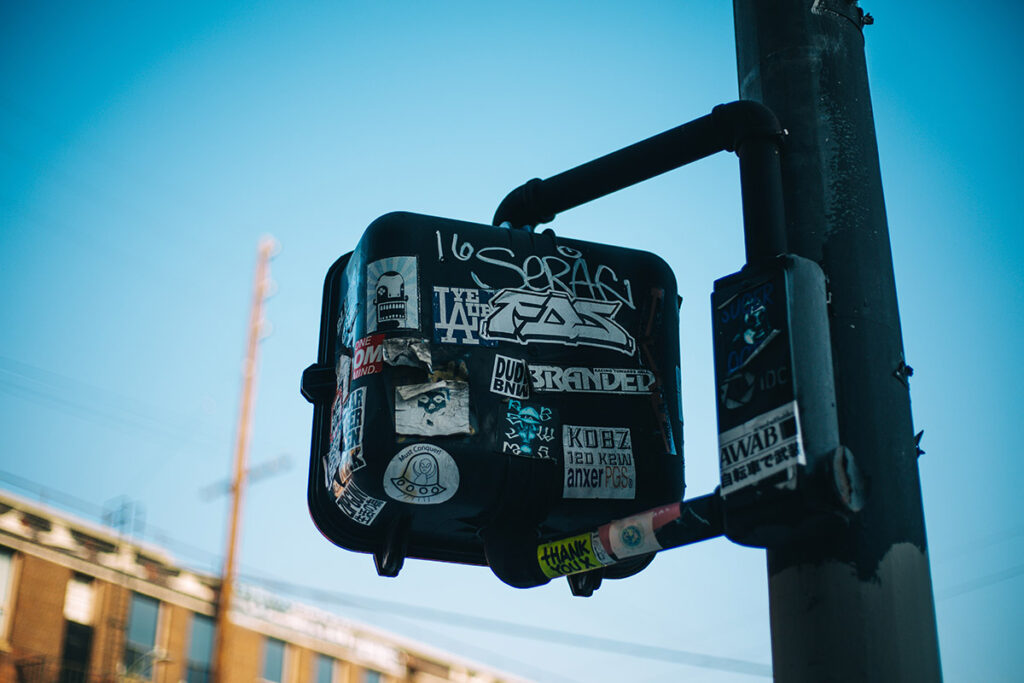
Take a look at these two lesson ideas:
- Collab on Slaps
Slaps (palm-sized stickers) are a great way to have artists “collab” in their new collective. Give each student a 3″ x 5″ piece of paper and have them fill half of it with their own drawings. You can choose a specific prompt for them or allow their creativity to run wild. Set a timer. When the time is up, have students pass their papers to the person next to them. They then need to complete the drawing in their own style. Use double-sided tape to stick the slaps to the classroom door for display. - Group Installation
Embrace differences in styles while maintaining a common theme. Each collective will generate a topic. With younger artists, you may want to provide a list of topics for them to choose from. Each artist will make their own personal piece about that topic. When all of your artists have finished, have them curate their own collective installation by displaying their work together. Challenge students to consider how they will make aesthetically-different pieces look unified. If students are old enough to install their own work, have them share their installations throughout campus.
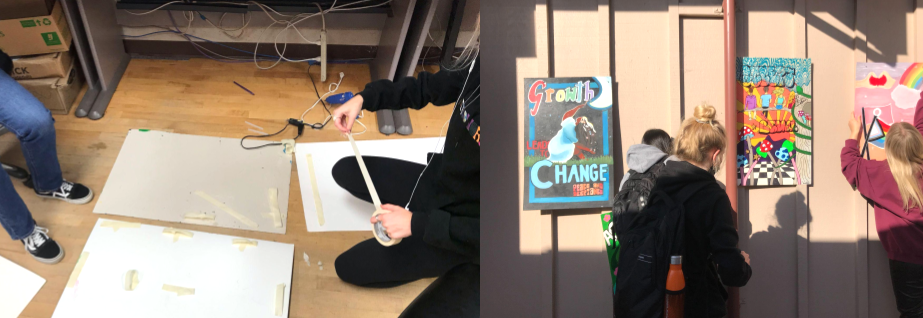
2. Involve local artists.
Because graffiti is largely generated in and based on specific locations, this is a great time to invite local artists into your classroom. While some graffiti artists may need to conceal their identity while speaking with your students, many will be excited about the opportunity to work with young artists! Even though many work under a moniker, they likely have social media accounts to document and share their work with the public. Instagram is a popular platform to find and connect with local graffiti artists. Both Nite Owl and Downtimer have worked with my high school students in varying degrees.
Once an artist has agreed to work with your students, determine what level of involvement they would like. Some artists may be happy with just an interview, whereas others may want to participate in your project themselves. Inviting local artists not only builds a connection between the artist and your art program but also opens students’ eyes as they walk around their community. They will start to notice tags they walked by hundreds of times before but never actually seen. Students will proudly point them out to their friends, especially if it’s an artist they met in class!
If no visitors are allowed on your campus right now due to COVID restrictions, consider recording video conference interviews with local artists.
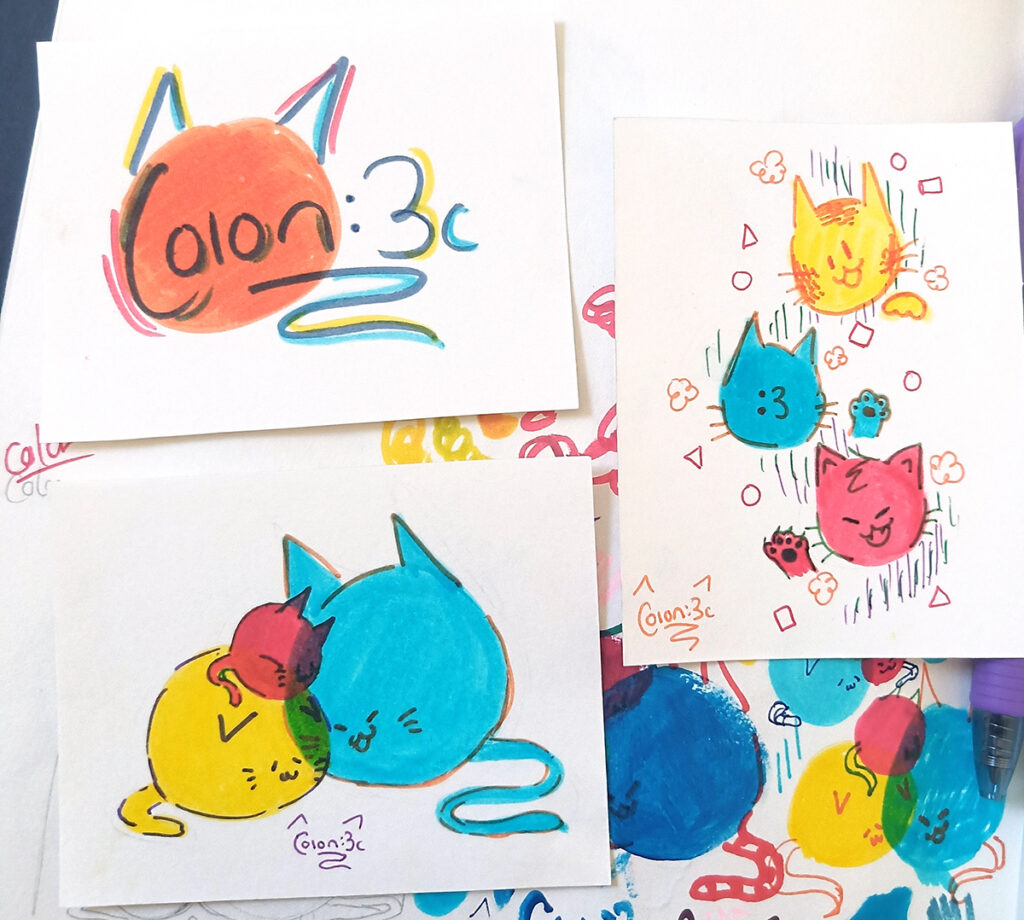
3. Display art on campus.
For many artists, the point of graffiti is to bring art to the public with no barriers. Have students plan their own installations around campus. Generate a class-wide prompt and have students get to work. They can also develop their own moniker or pseudonym to sign their work with. Set a date for the work to be installed and tell students that, while they do have school permission to exhibit their work, they must not be caught by their peers while installing it. Students will love the challenge of no one “knowing” it was them!
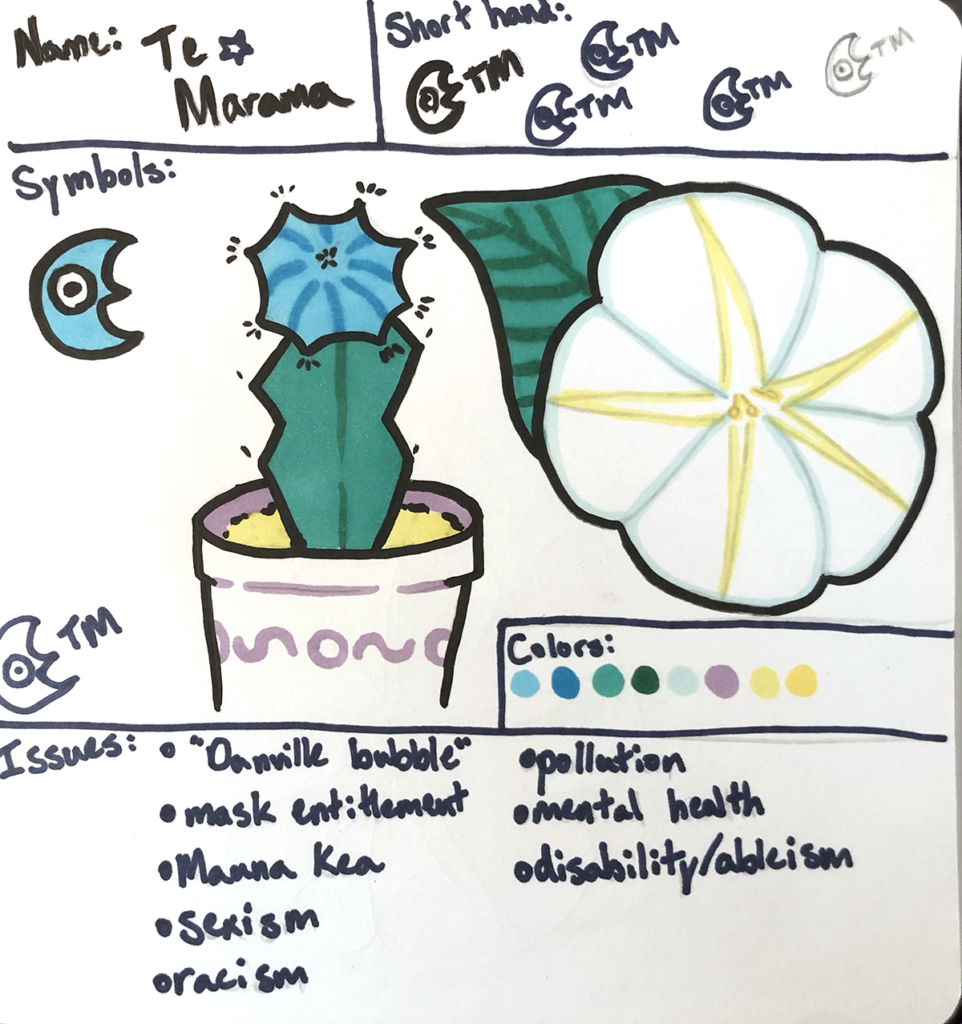
Ask permission.
Even though this is a “secretive” challenge for your students, be sure to talk to your administration ahead of time. Tell your administration about the project you are working on, and invite them into your room to see how engaged and excited your students are about their work. Then, ask your administrator if there are any parameters on where and how work can be displayed. Once you have that information, give them and the custodial staff the dates and locations of the installations. This way, you ensure that student work will be displayed and respected appropriately while your students consider the campus.
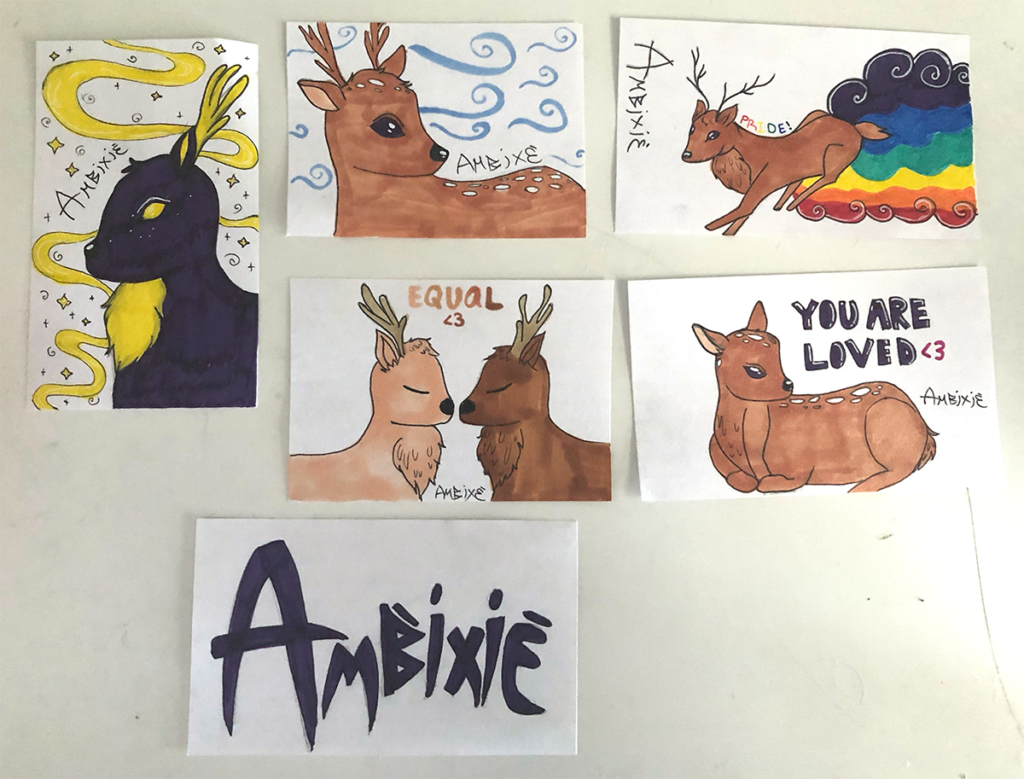
There is no doubt about it—students love graffiti. Everything from learning the history and terms to actually creating it themselves is enticing. Use this buy-in to build community amongst your budding artists and the place they live. Graffiti is a way to show students that art is alive around them, especially if you bring in local examples and artists. The next time you look for a new way to connect with your students and expand your own perceptions of local art, we hope you introduce graffiti or street art to your curriculum.
Are you craving more information about graffiti lesson plans? Check out the links below:
- Why You Need to Teach Graffiti in Your Art Room
- 12 Street Artists (Not Named Banksy) Your Students Should Know
- How to Implement a Graffiti-Inspired Unit
- 5 (Almost Legal) Street Art Projects!
- Inspiration and Engagement Through Graffiti (Ep. 059)
- Strategies for Teaching Graffiti (Ep. 119)
- Graffiti in the Secondary Art Room Pack in PRO Learning
- Contemporary Street Art Collection in FLEX Curriculum
Is graffiti art, vandalism, or a little of both?
What activities do you already do that involve community outreach?
Who are some local graffiti artists you can share with your students?
Magazine articles and podcasts are opinions of professional education contributors and do not necessarily represent the position of the Art of Education University (AOEU) or its academic offerings. Contributors use terms in the way they are most often talked about in the scope of their educational experiences.
